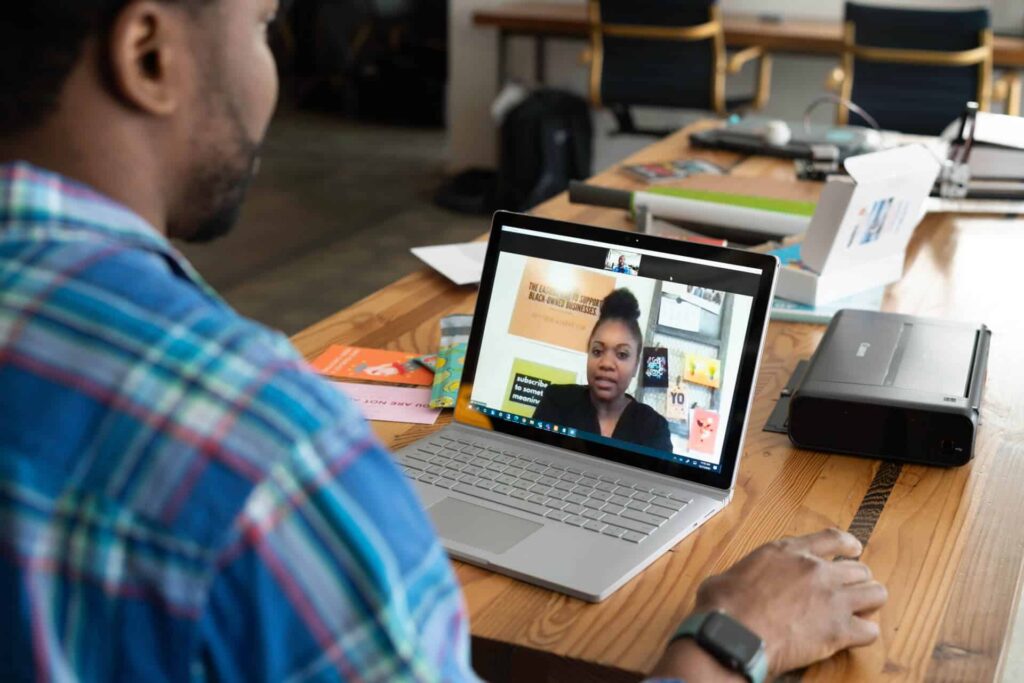The state of work and the return to the office remain very much in flux. After the surge in remote work due to the COVID-19 pandemic, the majority of workers have returned to the office; however, a nearly equal number say they don’t want to go back.
Companies have a complex path to walk as they work to reopen their offices and work toward “normalcy” in the workplace, which is increasingly difficult to define.
To understand the sentiments of office workers, we commissioned a new nationwide survey of 1,088 employed Americans, conducted online by the Harris Poll.
From our ongoing conversations with clients, we know every organization faces a unique set of challenges. But there is a constant theme: Employees want a safe, hybrid workplace model.
The Harris Poll survey reveals that the majority of American office workers (54%) have already returned to an office environment on a full-time basis. It also finds that over half of employees (51%) who went into an office prior to the coronavirus pandemic, do not want to return to the office five days a week.

Companies must embrace hybrid work as the future of work
When asked to identify which best describes their current employer’s plans for returning to the office—whether they are already back in the office or plan to be at some point—nearly half (48%) of employed Americans who work in an office setting and whose employer changed their working environment due to COVID-19 said their employer expects them to return full time.
But, in an interesting twist, two in five (41%) want their employer to expect employees to return full time with few changes to the office’s pre-pandemic look and feel.
Organizations have to embrace difficult choices as they navigate reopening offices, bringing teams back for in-person work, and enabling teams to work remotely. There’s also the matter of post-pandemic employee burnout. The impact of the delta variant and how safe it really is to return to the office also matters. Simply put, there is no one clear mandate for a course of action.
Hybrid work is on the rise. While some workplaces are embracing the hybrid model with varied in-office dates for employees, others have returned to pre-pandemic schedules. And at the opposite end of the spectrum, some have gone totally remote. Whichever way a company chooses to bring employees back to the office is impacted by both the new, hybrid workplace and new safety standards.

Employers must provide a safe working environment
Employers need to understand their employees’ thinking, their concerns, and what it will take to resume in-person work after the past year-plus of upheaval. They need a clear course of action, and they must communicate it properly to avoid additional confusion around reopenings.
There is no simple solution, and adding to that tension is a finding that nearly three-quarters of Americans working from home (71%) due to the pandemic strongly or somewhat agree their employer should require proof of vaccination when they return to the post-pandemic office.
A similar number (70%) strongly or somewhat agree employers should provide incentives for vaccinated employees. They also strongly or somewhat agree there should be a mandatory mask policy regardless of vaccination rates or status.

Flexible work must be a priority for the return to the office
A quarter (27%) said their employer currently requires them to return to the office for part of the week. They can choose where they work for the rest of the time.
About one in five employed Americans who work in an office setting (17%) want their employer to allow employees to decide where they work (in office, hybrid, or fully remote). A lesser number (13%) want their employer to require employees to spend most of their time working remotely. This would cut down commuting, but also reduce the amount of facetime with co-workers.

The future of work in the post-pandemic office
The current challenge is in organizations making office plans to find the right balance between what the business needs and what their employees want for the post-COVID office. No one approach works for every organization.
Office returns will vary by industry, comfort levels of both employers and employees, and geographical location. No matter what path they choose, organizations need an option to safely bring their employees back into the workplace while providing maximum flexibility in organizing their offices.
The complexities of a dynamic workplace are constantly evolving. Companies need a partner to help them navigate the return to the office in these turbulent times.
Contact OfficeSpace to learn more about how to best approach your return to the office.
Photos: PeopleImages, LinkedIn Sales Solutions, pixelfit, Ridofranz, Surface




